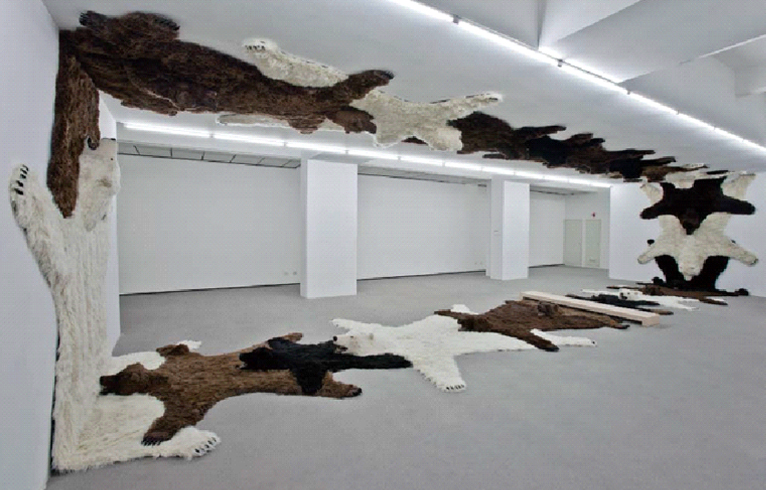PAOLA PIVI: SHARE, BUT IT’S NOT FAIR
| October 30, 2012 | Post In LEAP 16

“Share, But It’s Not Fair” is Paola Pivi’s first solo exhibition in China. Her works focus on the power of images themselves, often emphasizing factors like number and size. Because of this, some media coverage employed terms such as “gimmicky” and “wasteful.” Though such skepticism may be simplistic and crude, it also reflects how contemporary Chinese audiences are not as quick to buy blindly into big names, are more independent-minded in their approach to contemporary art, and are tolerant of a diverse spectrum of opinions. But what may have actually distracted people at the time of the opening was a different artist’s performance, incidentally taking place on the same night, not to mention a technical malfunction in Pivi’s large-scale installation It’s a cocktail party. Because of the initial clamor, I went back again to see the exhibition a second time and, just like re-reading a book, discovered all of the surprises I had missed the first time around.
The artist and curator have taken great pains to leave vital clues everywhere. On the second floor, in the title work Share, But It’s Not Fair, 400 intertwined red and yellow hand-sewn Nepalese pillows hang from the ceiling, while the artificial pearls of Thank you ocean take their inspiration from the cheap, shiny plastic beads sold at commodity markets in Shanghai. For many viewers, observing exotic cultures and religious customs is no different from watching travel shows on TV: just a novelty, some light entertainment. But with the help of consistent reminders from the works themselves, one can be easily awakened to the artist’s stance on a number of controversial issues, and to the critique of the relationship between the individual and the collective that lies behind the spectacular nature of her repeatedly overlapping constructions.
Humans love to share, but also need solitude. We are thus caught in the tension that comes with accepting this reality, one that will remain unresolved till the end of our lives. As a result, we come up with all kinds of ways to achieve momentary comfort and relief, like joining certain groups, or losing ourselves in solitary gluttony. In the fifth floor corridor, Triptych is a set of three photographic prints produced by superimposing the profile images of ribbons hanging on a white wall. As for What goes round – art comes round, if the viewer tries lying down in the middle of the circle of faux furs (a defenseless position), the sight of bearskin will take up his or her entire field of vision. Accompanying this experience is the potential for true, head-on questioning. With these works, the artist is at once a fanciful child who loves to play games and daydream and an experienced psychological counselor, engaged in a dialogue with her audience under the accepted premise of a “game” and its designated fantasy zone: a place to experience something closer to freedom, to compassion, to guilt…
It’s a cocktail party (2008) is a mechanical installation which runs for ten minutes every half hour. Once museum staff open the valve, nine giant taps release nine different liquids: water, orange juice, mint juice, almond syrup, glycerin, red wine, black ink, espresso, and facial tonic. In the end, these liquids will return to the bottom of the nine metal basins. Perhaps the spectacle’s denial of mediocrity lacks force, but the illusion brought about by this work still alleviates some of the tension inherent in the processing of reality. The audience experiences multi-sensory stimulation, returning to some fragment of quotidian life in our mind through the white noise as the liquids drop down in straight, vertical flows. Each time the piece comes to the end of a run, the flow is halted, like the moment we finish our household chores and turn off the water faucet any given day— the end of the pleasant absentmindedness and trance-like restfulness of the simple, mechanical process of dish-washing— leaving us ready once again to step out into our disillusionment and face our daily frustrations.
Lu Jing (Translated by Katy Pinke)

